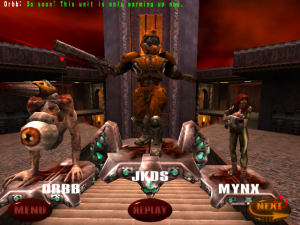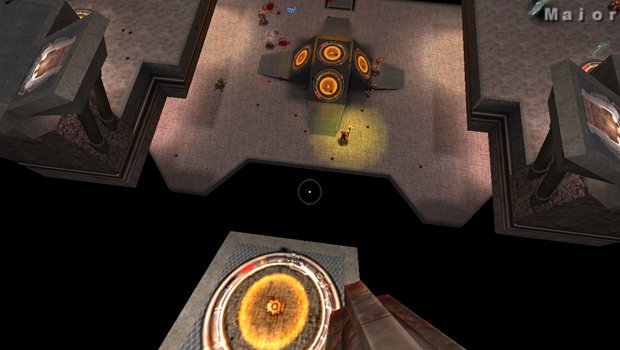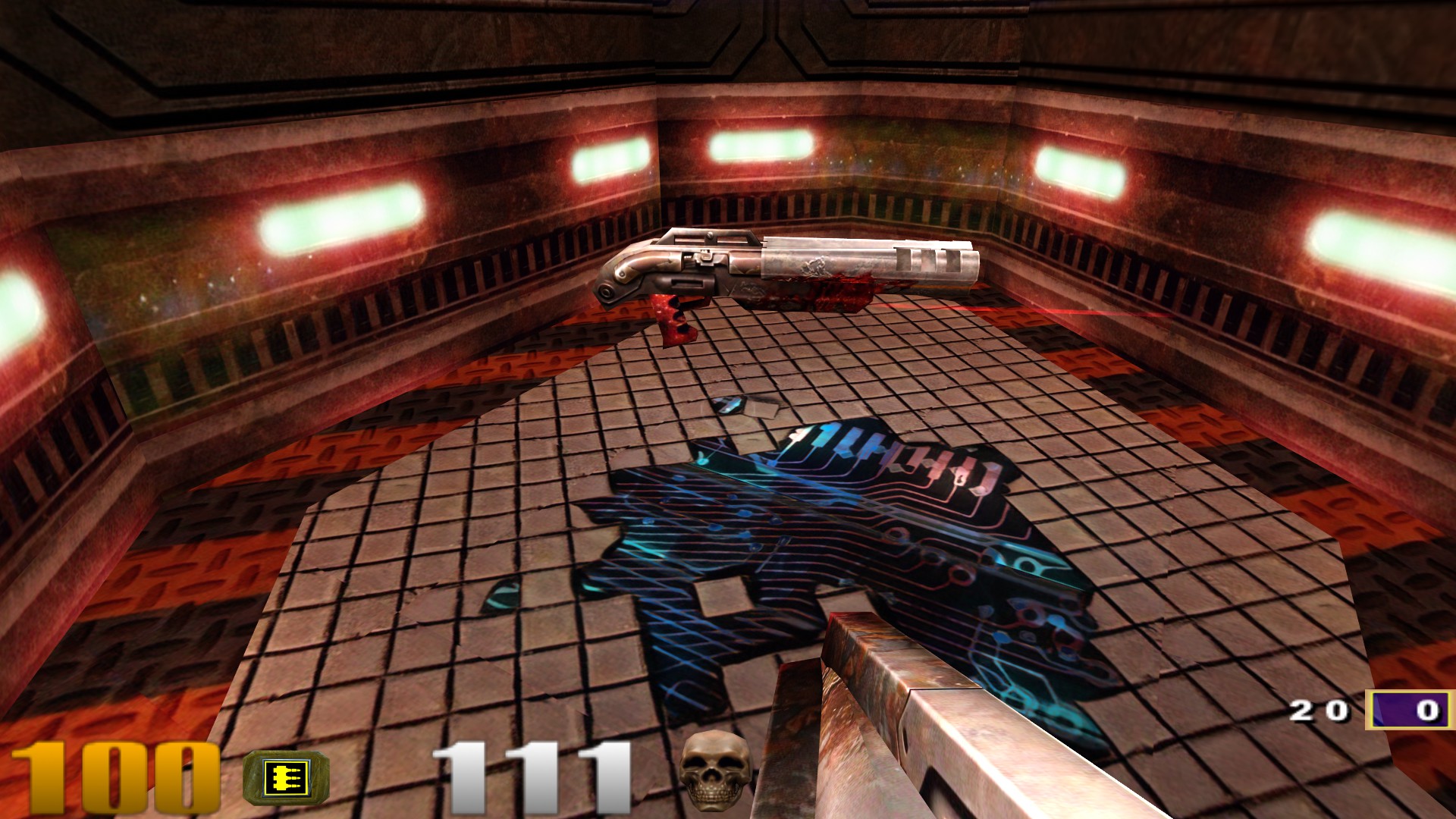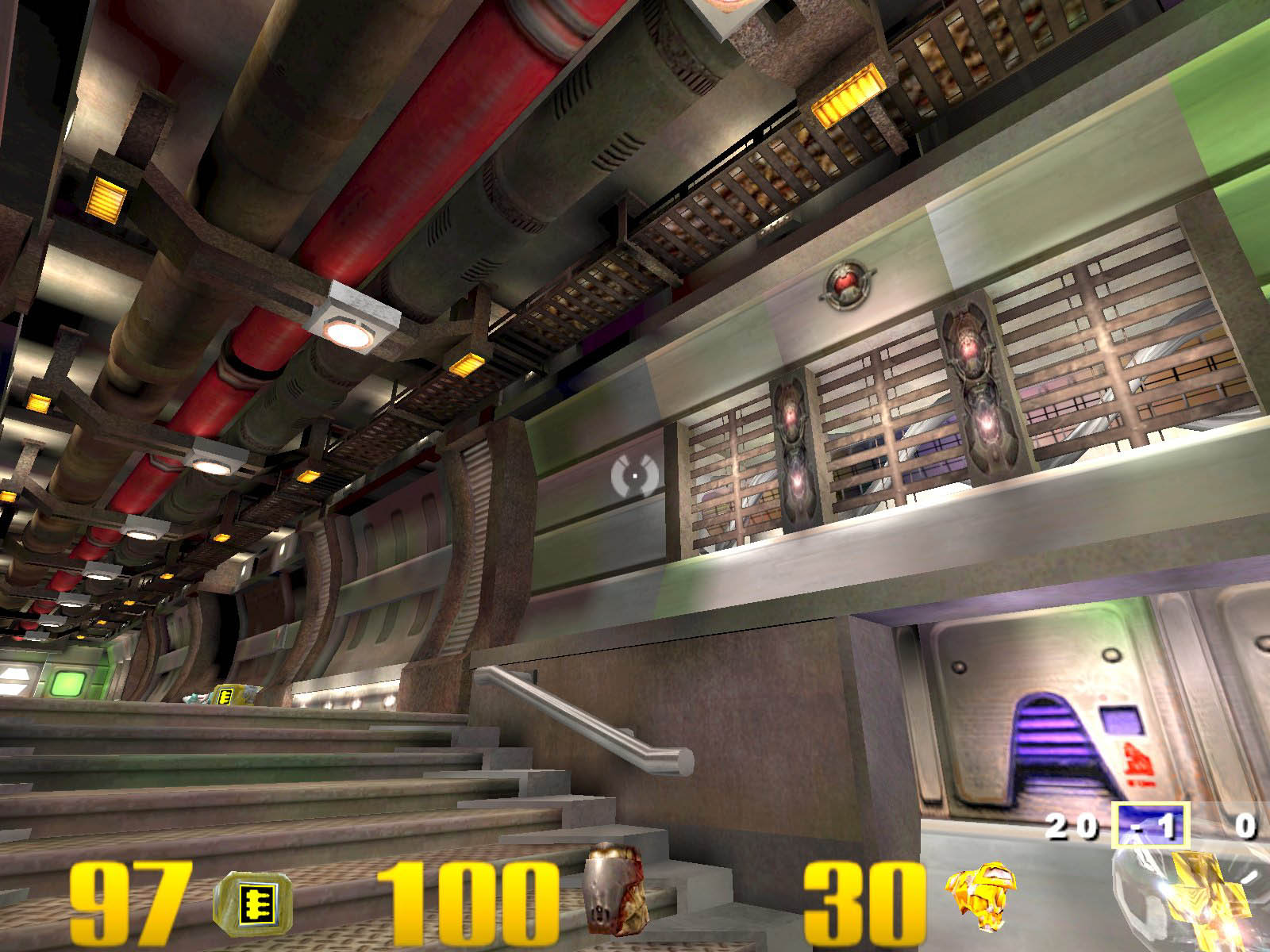

- #QUAKE III ARENA ENGINE SOFTWARE#
- #QUAKE III ARENA ENGINE OFFLINE#
- #QUAKE III ARENA ENGINE PROFESSIONAL#
- #QUAKE III ARENA ENGINE FREE#
Note : The synchronization is performed via
The GPU is almost never idle with this configuration. As soon as it is unlocked (at t3), the Main thread starts working on next frame, writing to SurfaceBuffer1. As soon as the Renderer thread is done with SurfaceBuffer1 (t3) it starts pumping surfaces from SurfaceBuffer2. It illustrate the blocking limitation of some of the method in the OpenGL API. This case (where the Renderer thread is locking the Main thread is actually the most common while playing Quake III: Main thread is done writing to SurfaceBuffer2.but cannot start writing to SurfaceBuffer1: It is locked. Renderer thread is still transferring data to the GPU: SurfaceBuffer1 is in use. The GPU thread read the surface from where the Renderer thread is pointing to. Meanwhile, the Renderer thread makes OpenGL call and patiently wait until the GPU thread has copied everything in a secure space. It writes surface to surfacebuffer2: This is a typical example of Double Buffering. The Main thread is deciding what is visible for next frame. The Renderer thread is starving and hence locked.įrom t1 to t2 : Things start to move all over the place:. The Main thread decides what to draw and write surfaces to the surfacebuffer1. 
The frontend (that is called Main thread in this example)Īlternatively write to one of the buffer while the other is read by the backend (called Renderer thread in this example).Īn example to illustrate how things are working: From t0 to t1 : When r_smp is set to 1ĭrawing surfaces are alternatively stored in a double buffer located in RAM.
#QUAKE III ARENA ENGINE PROFESSIONAL#
On the one hand, it taught me how professional C. The frontend and the backend communicate via a standard Producer/Consumer design. After learning C, one of the first projects I came into contact with, was the ID Tech 3 game engine 1. Unknown to a lot of people: Quake III Arena shipped with SMP support via The Quake 3 Shader bible: Multicore Renderer and SMP (Symmetric multiprocessing)

Developers can program vertex modifications but also add texture passes. The shader system is build on top of OpenGL 1.X fixed pipeline and is hence very costy. The rendering architecture was discussed by Brian Hook at the 1999 Game Developer Conference. The final result when combined at runtime via multi-texturing : The texture drawn by the level designer/artists: The multitexturing and lightmap step is clearly visible when the engine is modified to display only one or the other:
For each polygon it combines the lightmap with the color via multitexturing. The engine decompress the PVS for the current leave and determine was is actually visible. At this point all the preprocessing (PVSs and Lightmaps) is stored in the. q3light.exe calculate all illuminations for each polygon in the map and store the result as lightmap textures in the bsp file. In a bsp file as I described it in a previous article. q3vis.exe uses the portal system and generates a PVS (Potentially Visible Set) for each leave. Out of the BSP a portal system is generated: I wrote about this in Doom3 Dmap tool. I wrote about this in Quake1 renderer review. q3bsp.exe slices the map via Binary Space Partitioning. The renderer overall architecure is the Quake Classic: It relies on the famous BSP/PVS/Lightmap combo: Harness two, new powerups called Kamikaze and Invulnerability Shield, and four CTF-only Runes called Scout, Doubler, Guard, and Ammo-Regen.The renderer is entirely contained in renderer.lib and statically linked against quake3.exe:. Wield three new guns: Chaingun, Nailgun, and Proximity Launcher. Fight against four new AI bots: Pi, Fritzkrieg, Janet, and James. Discover three new modes: One-Flag CTF, Overload, and Harvester. Play the new single-player “Tournament” mode. Warriors once alone must now join forces and face the Arena as one. Master your clan’s strengths and weaknesses across a variety of new modes and arenas. In this team-focused official expansion pack for Quake III Arena, choose one of five clans (The Fallen, Pagans, Crusaders, Intruders, and Stroggs) and fight for dominance. Wield twelve powerful and unique weapons. Experience thirty-five unique, gothic and sci-fi-infused arenas. 
#QUAKE III ARENA ENGINE FREE#
Enjoy exciting modes including Free for All (FFA), Team Deathmatch (TDM), Tournament (1v1), and Capture the Flag (CTF). #QUAKE III ARENA ENGINE OFFLINE#
Play offline in single-player mode with AI-controlled bots. Compete in fast-paced multiplayer action for up to 16 players. Wield a variety of guns and power-ups as you fight for glory against ruthless combatants in high-tech and gothic arenas in this fast-paced, skill-based single-player and multiplayer FPS. The greatest warriors of all time and space have been summoned to battle for the amusement of an ancient alien race. *Quake III Arena now includes the main game and Quake III: Team Arena expansion pack. #QUAKE III ARENA ENGINE SOFTWARE#
Quake III Arena is a critically acclaimed, multiplayer-focused, arena first-person shooter developed by id Software and released in 1999.








 0 kommentar(er)
0 kommentar(er)
